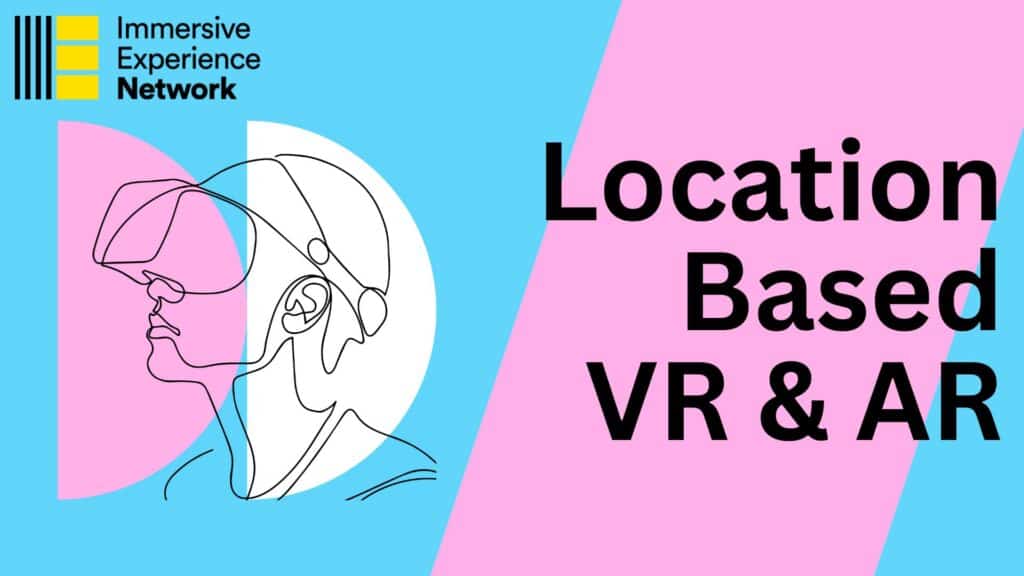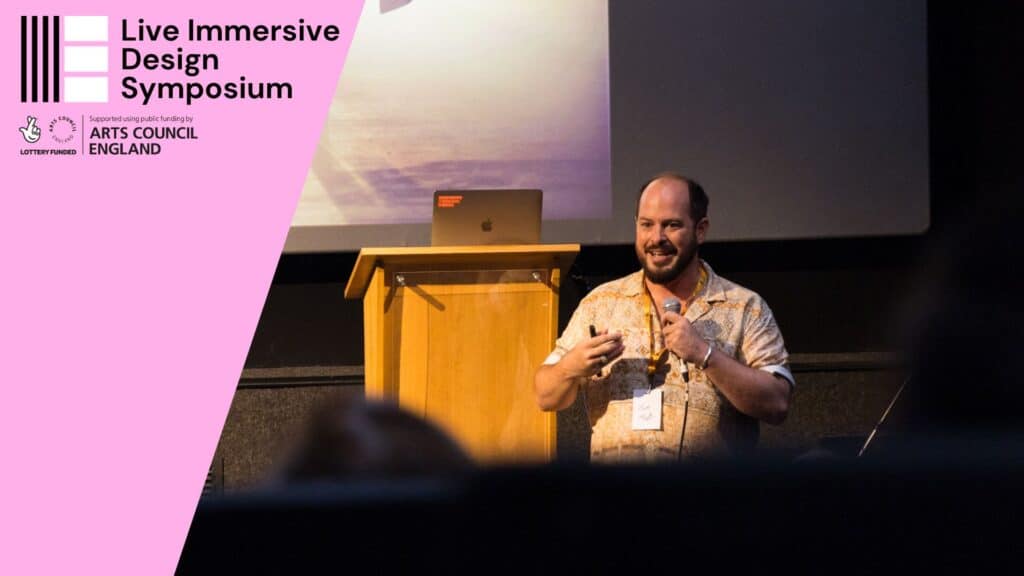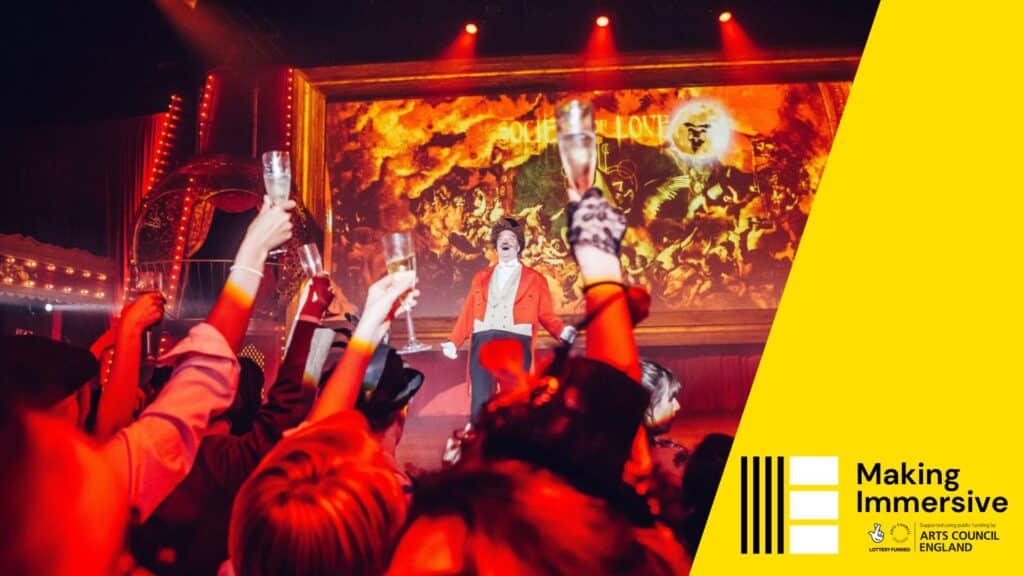What is immersive and interactive theatre?
Immersive and interactive theatre is a kind of theatrical performance where the traditional physical, psychological or narrative boundaries between performers and audience members are blurred or entirely dissolved.
In this type of theatre, audience members are not passive observers but active participants in the narrative. The performance space often extends beyond the conventional stage, encompassing entire rooms, buildings, or outdoor spaces, allowing the audience to move through the environment, interact with the performers, and sometimes even influence the outcome of the story.
Alternative names for this form of theatre include participatory theatre, experiential theatre, and environmental theatre.
Immersive theatre offers a radical departure from traditional theatrical experiences, inviting audiences to step inside the story and play an active role through environmental design, audience agency, multisensory experiences, intimate interactions, and non-linear storytelling.
Felix Barrett, of British immersive theatre company Punchdrunk, told the Telegraph: “When an audience goes into a regular theatre, they know what they’re getting – seats, a programme, ice cream, a stage, two halves – and as a result they slump, switching off three quarters of their brains. I wanted to create productions where the audience is physically present, so that they are driven by a base, gut feeling and making instinctive decisions. That sort of show leaves a far larger imprint on you than just watching something.”
Where did immersive and interactive theatre come from?
Some of the earliest examples of immersive and interactive theatre include the ‘Happenings’ of the 1950s and 1960s, pioneered by artists like Allan Kaprow, which involved spontaneous, scripted events where audience participation was key.[reference]
The 1960s and 70s saw the rise of performance art and experimental theatre groups like The Living Theatre and The Performance Group, which explored the possibilities of audience participation and unconventional performance spaces.[reference / reference]
What makes immersive and interactive theatre immersive?
Environmental design
Immersive theatre often features elaborate and detailed set designs that transform performance spaces into richly imagined worlds. These environments are not just backgrounds for the action but integral parts of the narrative, designed to engage the audience’s senses and draw them into the story.
Audience agency
One of the defining features of immersive and interactive theatre is the agency afforded to the audience. Participants may choose where to go, whom to interact with, and how to engage with the elements of the performance. This freedom to choose how to interact with the narrative, even in small ways, significantly enhances the sense of immersion.
Multisensory experiences
Immersive theatre productions frequently engage multiple senses, incorporating not just visual and auditory elements but also tactile, olfactory, and even gustatory components. This multisensory approach deepens the level of engagement and creates a more vivid and memorable experience.
Intimate performer-audience interaction
The close interaction between performers and audience members is a hallmark of immersive theatre. Performers might directly address, touch, or even lead individual audience members aside for private scenes, creating a personal connection that intensifies the immersive experience. At a very minimum, the fact that the audience and actors are sharing the same physical space creates a passive tangible connection, even if there is no direct interaction between them.
Non-linear storytelling
Immersive theatre often eschews traditional linear narratives in favour of fragmented or multiple concurrent storylines, or such elements might come about due to the audience choice in how they view or interact with a linear narrative (for example, through a different physical perspective). This non-linear approach encourages exploration and discovery, as audience members piece together the story from the scenes and interactions they encounter.
How are immersive and interactive theatre similar to, or different from, other immersive experiences?
In its use of physical set design to create a fictional world, immersive and interactive theatre is similar to scare attractions, themed attractions and LARPing – all of which do or can involve performing characters. But, unlike any of these other examples, theatre shows tend to follow more distinct, directed story beats which are directed to the cast but not known to the audience beforehand.
Examples
Shunt (1998-2014) was a London-based collective known for creating large-scale, site-specific theatrical events that blend performance art, installation, and drama in unconventional spaces. Their immersive art experiences were characterised by a fusion of sound, digital media, and physical performance to engage audiences in multi-sensory narratives. Shunt’s work challenged traditional theatre boundaries, inviting participants into immersive worlds that provoke exploration and personal interpretation.
A later significant milestone in the development of immersive theatre was the work of the British company Punchdrunk, whose production of ‘Sleep No More’ in 2003 redefined the possibilities of the genre by creating a massive, multi-story environment in which audience members were free to explore and discover elements of the narrative at their own pace.
Dreamthinkspeak is also known for its immersive, site-specific productions that blend film, installation art, and live performance. One notable work is ‘In the Beginning was the End’, which draws inspiration from Leonardo Da Vinci and the Book of Revelation, set against a backdrop of modern machinery and located in the underground passageways of Somerset House, London.
Swamp crafts immersive entertainment experiences, blending storytelling with digital innovation. Their work ‘Plymouth Point’ is an interactive online experience that invites participants to delve into a web of mystery, combining live performance with the thrill of an escape room.






